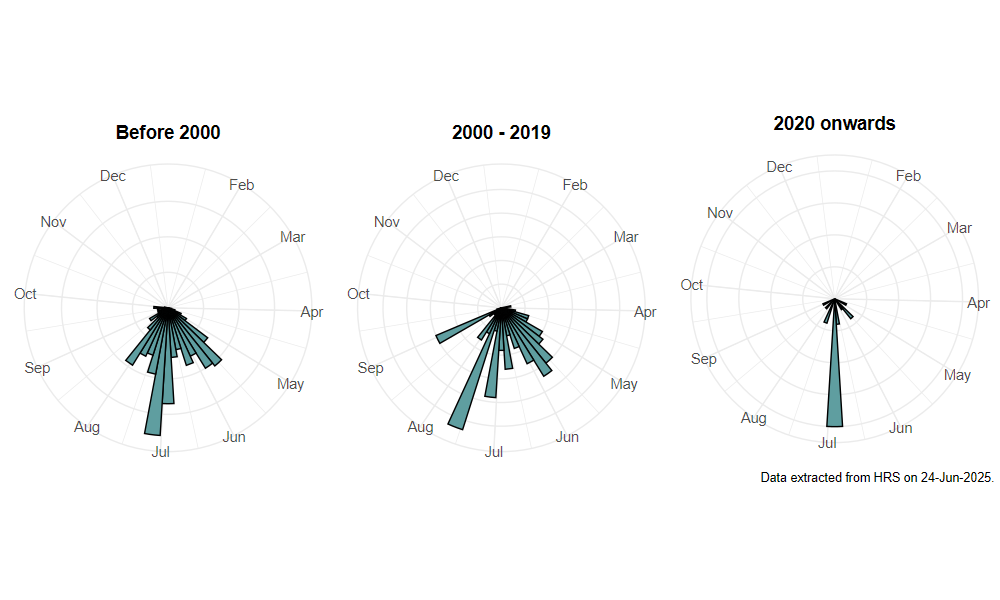Neoascia geniculata (Meigen, 1822)
Identification
Identification difficulty = 4. ![]()
![]() according to Ball & Morris, 20241
according to Ball & Morris, 20241
Biology
The small, semi-aquatic larva has been found in decaying vegetation around the margins of ponds. Usually swept from lush emergent vegetation, such as Reed Sweet Grass Glyceria maxima, around ponds and ditches. Adults visit flowers, especially buttercups Ranunculus sp., but do not seem to move far from larval habitat.
Flight period
The following plots show the number of unique records per week excluding those reported to be of immature stages.

Distribution
Very widely distributed but probably under-recorded owing to the difficulty of identification.

Trends
The following plots show the Frescalo TFactor vs year and a map of the rescaled frequency (all records) for the species.
-
Ball, S., & Morris, R. (2024). Hoverflies of Britain and Ireland. WILDGuides (3rd ed.). Oxford: Princeton University Press. ↩